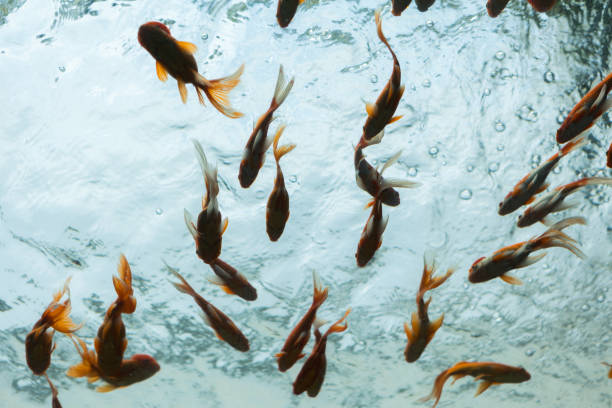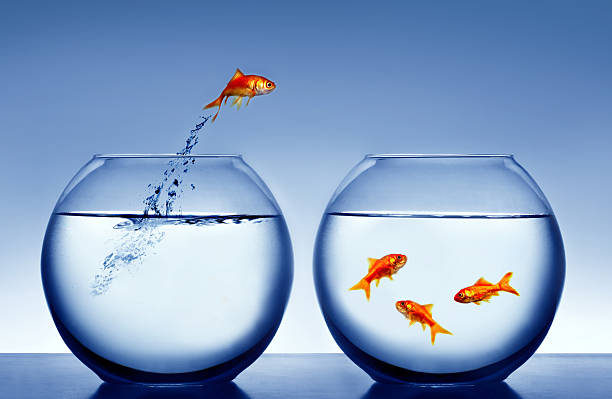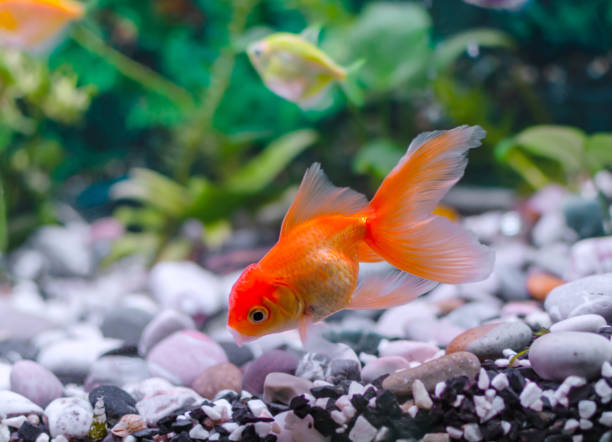Introduction
Do goldfish eat babies? This is a common concern among goldfish owners. Understanding goldfish behavior can shed light on this intriguing question. Goldfish are popular pets due to their vibrant colors and relatively easy care requirements. However, their eating habits, especially concerning their fry, can be puzzling. The Goldfish Tank is dedicated to providing accurate information to help goldfish enthusiasts care for their aquatic pets.
In this article, we will explore whether goldfish eat their babies and why this might happen. We aim to provide a thorough analysis to help you understand and address this behavior. By delving into goldfish behavior and providing practical advice, we hope to help you create a safe environment for both adult goldfish and their fry.
This understanding is crucial for anyone interested in raising goldfish fry successfully.
Understanding Goldfish Behavior
Understanding goldfish behavior is crucial for any aquarist seeking to provide optimal care for these fascinating creatures. A key question many goldfish owners have is, “Do goldfish eat babies?” The short answer is yes, goldfish do eat their babies, and understanding their behavior can help explain why this occurs. Goldfish are naturally omnivores, and their diet in the wild includes a range of plant and animal matter. This voracious appetite often extends to their own fry if they come across them. Goldfish do not distinguish between their offspring and other food sources. The behavior stems from their survival instincts rather than any form of malice.
In a community tank, goldfish often exhibit social behaviors such as swimming in groups and foraging together. However, when it comes to mating and spawning, their behavior changes significantly. During the spawning process, goldfish may chase each other vigorously, and post-spawning, they may consume unfertilized eggs and even their own fry. This is why keeping goldfish fry safe from adult goldfish requires special attention.
Monitoring your goldfish closely can reveal a wealth of information about their behavior patterns. For instance, you might observe goldfish exhibiting territorial aggression or stress-induced behaviors. Understanding these behaviors can help in creating a harmonious environment that minimizes the risks to goldfish fry.
In conclusion, comprehending the intricacies of goldfish behavior is vital for preventing them from eating their babies. By observing and understanding these behaviors, you can take proactive steps to protect the fry and ensure a healthy tank environment. Knowledge of goldfish’s natural instincts and behaviors provides a foundation for successful goldfish care.

Do Goldfish Eat Their Babies?
Yes, goldfish do eat their babies. Understanding why goldfish eat their babies involves delving into natural instincts, environmental conditions, and specific behaviors exhibited by these popular pets. Goldfish, like many other fish species, lack parental instincts to protect or care for their offspring.
Once the eggs are laid, adult goldfish often see them as a food source. This absence of parental care leads to a higher likelihood of goldfish fry being consumed soon after hatching. In a confined environment like a tank, the risk of fry being eaten increases. Goldfish are opportunistic feeders, and the availability of small, nutrient-rich eggs or fry in the tank can make them an easy target. This behavior is less common in the wild, where fry have more chances to hide and escape predation.
Another factor to consider is the stress level within the tank. Overcrowding, lack of hiding spaces, and poor water quality can exacerbate aggressive feeding behaviors, causing adult goldfish to eat their fry more readily. Thus, creating a suitable environment that minimizes stress is crucial for the survival of goldfish fry. Goldfish are also driven by an instinct to consume anything that fits in their mouths. This can include their babies, especially if they are not receiving adequate nutrition from other sources. Providing a balanced diet and ensuring there are enough hiding spots in the tank can help reduce the risk of fry being eaten.
To summarize, goldfish eat their babies primarily due to the lack of parental instincts, opportunistic feeding behavior, and environmental stress factors. By understanding these aspects, goldfish owners can take steps to protect fry and increase their chances of survival. Efforts such as setting up a separate breeding tank, ensuring a nutrient-rich diet, and maintaining optimal water conditions can significantly help.

Why Goldfish Might Eat Their Fry
Do goldfish eat babies? Yes, goldfish might eat their fry for several reasons. Understanding why goldfish eat their babies is crucial for any goldfish keeper. The first reason is stress. Goldfish are sensitive creatures, and stressful conditions can cause them to eat their fry. This can include crowded tanks, poor water quality, or sudden changes in their environment.
Another reason goldfish might eat their fry is hunger. If adult goldfish aren’t fed adequately, they might see their babies as an easy snack. Providing regular, balanced meals can help mitigate this behavior. Goldfish lack parental instincts. Unlike mammals, goldfish do not recognize their offspring. They see the fry as small fish that are just part of the tank environment, making it more likely they’ll eat them without understanding the consequences.
Additionally, territorial behavior can play a role. Goldfish might see the fry as an intrusion in their space, leading to aggressive behavior that results in the fry being eaten. This is especially true in smaller tanks where space is limited.

How to Prevent Goldfish from Eating Their Babies
Do goldfish eat babies?
Yes, goldfish are known to eat their babies if given the chance. If you want to protect your goldfish fry from being eaten, there are several preventive measures you can take.
1. Use a Breeding Tank:
Separating the breeding pair into a dedicated breeding tank is a highly effective method. This ensures that the adult goldfish are not in the same environment as the fry when they hatch. A breeding tank minimizes the chances of the goldfish eating their babies.
2. Install a Breeding Net or Box:
Another alternative is to use a breeding net or box within your main aquarium. This allows the fry to swim freely without the threat of being eaten by the adult goldfish. Breeding nets are inexpensive and easy to install, making them a popular choice among goldfish enthusiasts.
3. Provide Plenty of Hiding Spaces:
Creating ample hiding spaces in the tank can help protect the goldfish fry. Use aquarium plants, rocks, or specially designed fry shelters. These hiding spots give the fry a place to retreat, reducing the likelihood that they will be eaten.
4. Monitor Feeding Habits:
Goldfish may resort to eating their babies if they are not sufficiently fed. Ensuring that both the adults and the fry are well-fed can reduce predatory behavior. Feed your goldfish a balanced diet and provide special fry food for the young ones.
5. Adjust the Tank Environment:
Maintaining optimal water conditions can also help prevent goldfish from eating their babies. Stress may cause adults to eat their fry, so keeping the water clean and stable is crucial. Use a reliable water filter and perform regular water changes to ensure a healthy environment.
6. Remove the Fry Post-Hatching:
As a last resort, consider removing the fry from the main tank once they hatch. Use a soft net to gently transfer the fry to a different tank or container. This separation allows the fry to grow without the constant threat of predation. By implementing these strategies, you can create a safer environment for your goldfish fry. Protecting the young ones ensures they have the best chance to grow and thrive. Always remember, the question “do goldfish eat babies?” can be managed effectively with proper care and attention. Taking these steps will greatly increase the survival rate of your goldfish fry, contributing to a healthy and vibrant aquarium.

Raising Goldfish Fry Successfully
Raising goldfish fry successfully requires understanding and careful planning, especially since the question “do goldfish eat babies” often arises among new goldfish owners. Goldfish indeed have a tendency to eat their fry, which necessitates a different approach to nurture young fish. Ensuring the successful growth of goldfish fry starts with a peaceful environment free from adult goldfish. One vital step is to separate the goldfish fry from the adults as soon as possible to prevent any risk of the adults eating the babies.
A dedicated tank for the fry ensures that they have the best chance to grow without the threat of predation. Maintaining the water quality in the fry tank is crucial.
Clean and stable water parameters promote healthy development and reduce the likelihood of disease. Regular water changes and a good filtration system help achieve this goal, keeping ammonia and nitrite levels in check.
Feeding is another significant aspect. Goldfish fry have different nutritional needs compared to adult goldfish. Providing them with high-quality fry food or finely crushed flakes ensures they receive the necessary nutrients for their rapid growth. Live foods such as brine shrimp and daphnia are excellent for fry, stimulating their feeding instincts and offering high nutritional value.
Monitoring the growth of goldfish fry is essential to determine when they are ready to be introduced to the main tank with adults. Typically, fry need to be at least an inch in length before they are considered safe from being eaten by adult goldfish. Consistent tracking of their size ensures that they are introduced back into the tank at the proper time.
In summary, raising goldfish fry successfully involves providing a safe environment, maintaining water quality, offering appropriate food, and carefully monitoring their growth. Implementing these strategies helps overcome the challenges posed by the natural tendency of goldfish to eat their babies, ultimately ensuring a thriving goldfish population in your home aquarium.
When to Introduce Fry to the Main Tank
Do goldfish eat babies? Yes, adult goldfish often eat their fry if given the chance. This behavior is common in many fish species, not just goldfish. Introducing fry to the main tank too early can lead to them being eaten by adult goldfish. Identifying the right time to introduce them is crucial for their survival. Goldfish fry should be at least an inch long before they are added to a tank with adult goldfish. At this size, they are more capable of avoiding potential threats and competing for food.
Monitor the growth of your goldfish fry closely. It can take anywhere from 3 to 4 months for fry to reach a suitable size for introduction to the main tank. Perform a gradual introduction to avoid stressing the fry and the adult goldfish.
Start by placing the fry in a separate container within the main tank for a few days.
This helps the adult goldfish acclimate to the presence of the fry.
Observe behavior during the introduction period. If any aggressive behavior occurs, it’s best to remove the fry and delay the introduction. Introducing goldfish fry to the main tank at the appropriate time is essential for their development and safety. Taking careful steps can ensure a successful integration without detrimental consequences.

Conclusion
Understanding why goldfish might eat their fry helps us prevent it effectively. By creating a safe environment and employing strategies to protect the fry, owners can ensure successful growth. Raising goldfish fry to a suitable size before introducing them to the main tank also contributes to their survival. We hope this guide has provided you with essential insights into goldfish care. Keeping your goldfish healthy and your fry safe requires knowledge and attention to detail.
